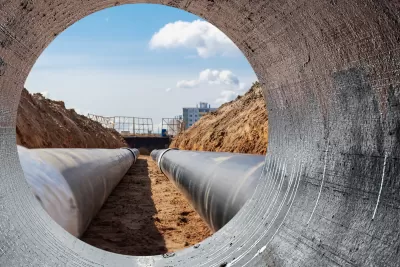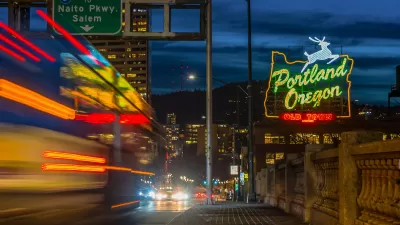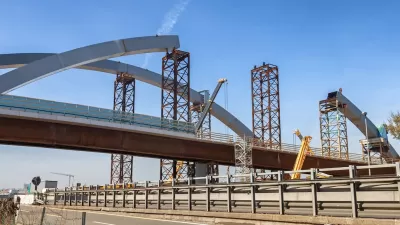A new federal program hopes to replicate the success of DARPA by developing ambitious infrastructure projects with government funding.

A new federal program titled the Advanced Research Project Agency for Infrastructure (ARPA-I) is taking aim at ‘moonshot’ projects that require massive research and development funding to develop, writes Andrew J. Hawkins in The Verge.
Some of the last century’s most important inventions, like the internet, GPS, and autonomous vehicles, grew out of the Defense Advanced Research Project Agency (DARPA), and Transportation Secretary Pete Buttigieg hopes ARPA-I could do similar things for innovation in the infrastructure sector.
ARPA-I was authorized as part of the Biden administration’s signature $1.2 trillion Bipartisan Infrastructure Law, which passed in 2021. In essence, the goal of the new agency is to futureproof the nation’s infrastructure against climate change, massive technology disruption, energy transition, or any other imminent challenge we have yet to conceive of.
The administration is calling on Congress to appropriate $19 million in additional funds to the program in 2024. “Arati Prabhakar, director of the White House Office of Science and Technology Policy, said that ARPA-I will bring together ‘talented individuals’ as program managers whose job it is to understand the scope of the challenge” and address three key tasks: “set a very big bold, barely feasible goal;” “build a plan that might actually be able to show that that goal is possible;” and “execute like mad.”
FULL STORY: A moonshot for infrastructure

Planetizen Federal Action Tracker
A weekly monitor of how Trump’s orders and actions are impacting planners and planning in America.

San Francisco's School District Spent $105M To Build Affordable Housing for Teachers — And That's Just the Beginning
SFUSD joins a growing list of school districts using their land holdings to address housing affordability challenges faced by their own employees.

The Tiny, Adorable $7,000 Car Turning Japan Onto EVs
The single seat Mibot charges from a regular plug as quickly as an iPad, and is about half the price of an average EV.

Seattle's Plan for Adopting Driverless Cars
Equity, safety, accessibility and affordability are front of mind as the city prepares for robotaxis and other autonomous vehicles.

As Trump Phases Out FEMA, Is It Time to Flee the Floodplains?
With less federal funding available for disaster relief efforts, the need to relocate at-risk communities is more urgent than ever.

With Protected Lanes, 460% More People Commute by Bike
For those needing more ammo, more data proving what we already knew is here.
Urban Design for Planners 1: Software Tools
This six-course series explores essential urban design concepts using open source software and equips planners with the tools they need to participate fully in the urban design process.
Planning for Universal Design
Learn the tools for implementing Universal Design in planning regulations.
Smith Gee Studio
City of Charlotte
City of Camden Redevelopment Agency
City of Astoria
Transportation Research & Education Center (TREC) at Portland State University
US High Speed Rail Association
City of Camden Redevelopment Agency
Municipality of Princeton (NJ)





























